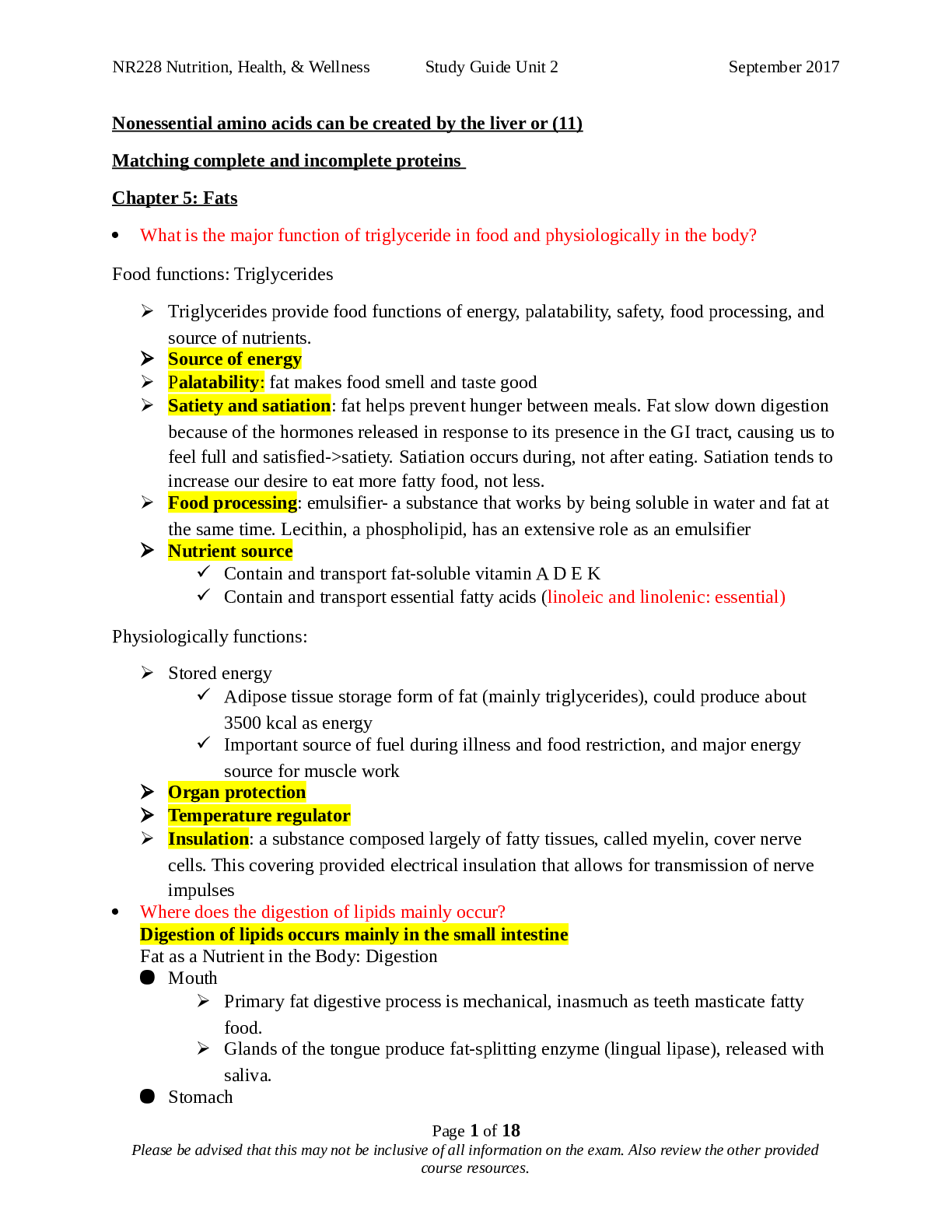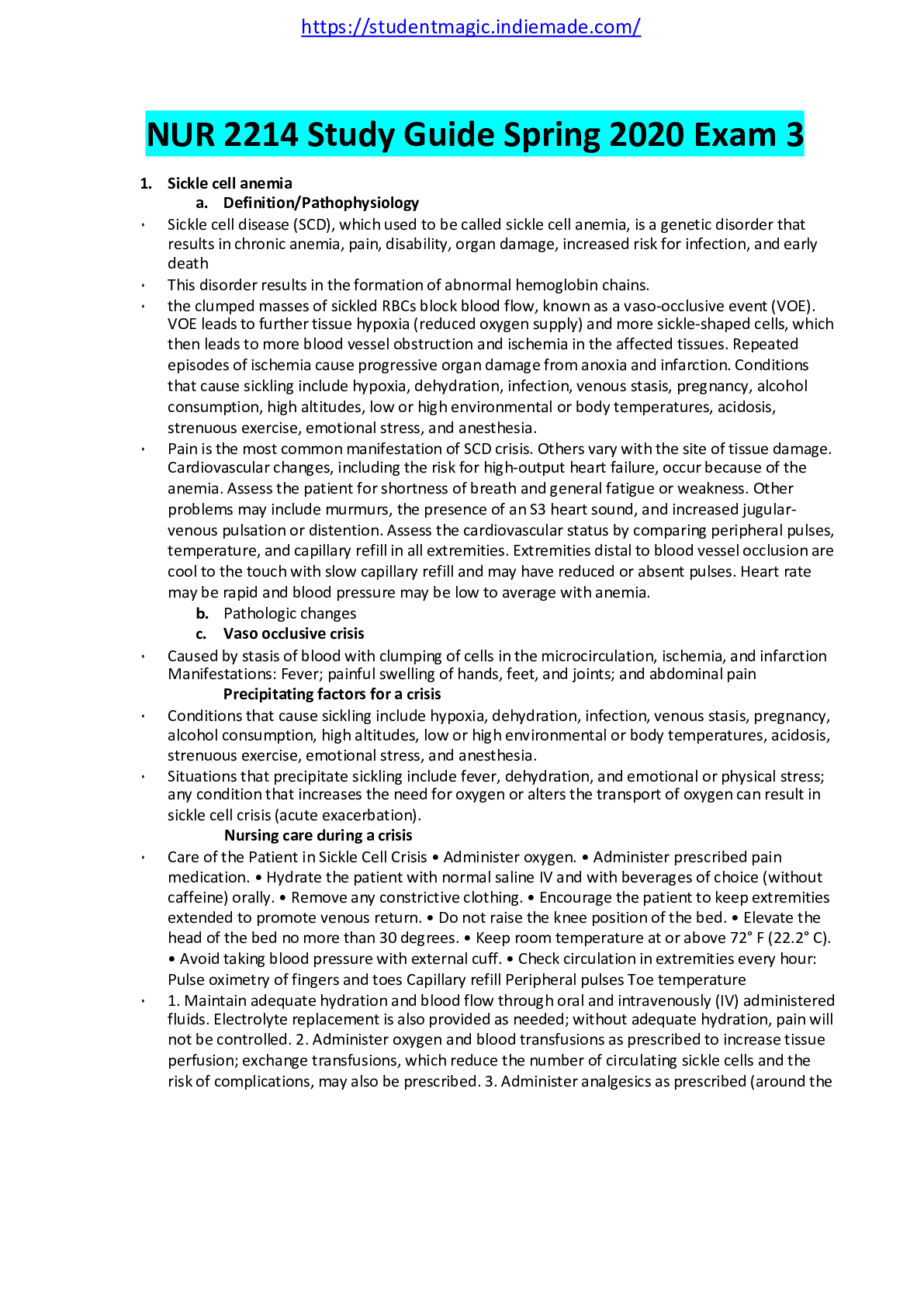*NURSING > STUDY GUIDE > Management of Patients with Chest and Lower Respiratory Tract Disorders (All)
Management of Patients with Chest and Lower Respiratory Tract Disorders
Document Content and Description Below
Management of Patients with Chest and Lower Respiratory Tract Disorders, Asthma & COPD Atelectasis: • Collapse of alveoli • Acute or chronic • Can be segmental, lobar, or whole lung • Cau... ses? o Decrease in ventilation or blockage that is obstructing the airway o Obstructive → foreign body, tumor o Non-obstructive → neurological or musculoskeletal disease processes (reduced lung volume capacity) o Shallow breathing, hypoventilation, immobility after surgery (with pain → hesitant to cough and deep breath) o Increase pressure on the lung → pneumothorax or pneumonia • Assessment findings o Shortness of air, tachypnea, tachycardia, cough, sputum production, anxiety, orthopnea, low O2 sats o Severe → cyanosis, hypoxemia o When listening to lungs will hear crackles and decreased breath sounds in the involved areas ▪ Crackles in lower lobes ▪ Unequal chest expansion o Chest x-ray will look opaque in area that has atelectasis ▪ Chest x-rays done post-op • Interventions- Prevention is the KEY! Preventative Measures: • TCDB (turning, coughing, deep breathing) • Early mobilization • Incentive spirometry • CPT (chest physiotherapy) • Pain management → comfort, deep breathing, mobility • Monitor opioid use o Respiratory depression Pneumonia: • What is Pneumonia? o Excessive fluid in the lungs due to inflammation of the parenchyma which is lung tissues, caused by an infectious process o Fibrin and edema stiffen the lung, which causes decreased compliance and alveolar collapse ▪ Compliance → the ability of the lung to expand o Segmental, lobar, or diffusely scattered • Types o Bacterial o Mycobacteria (TB) o Fungus o Viral • Community-acquired pneumonia (CAP) o Develops within first 48 hrs. of admission o Do not meet criteria for HCAP o Usually caused by pneumococcus, strep, and h. flu • Health care-associated pneumonia (HCAP) o Multi-drug resistance, immunocompromised, aspiration o Pre-existing lung disease or immunocompromised • Hospital-acquired pneumonia (HAP) • Ventilator-acquired pneumonia (VAP) o Occurs > 48 hrs. after intubation o Prevention is the key Pneumococcal Pneumonia: • Approximately, 18,000 older adults die each year from pneumococcal disease in the United States. • The vaccine should be administered routinely: o Adults 65 years and older o For anyone 2 years or older with certain chronic illnesses Aspiration Pneumonia: • A foreign substance that enters into the lung • Which lung is more likely to be affected? WHY? o Right side more likely (right is straighter angle) • Who is at high risk? o Seizure activity, brain injury, decreased LOC o Flat body position, stroke, swallowing/vocal cord disorder • Prevention is the KEY! o Keep HOB elevated 30-45 degrees at all time o Decrease use of sedatives o Small amount of foods and chew slowly o Assess NG tube placement (x-ray, tube in distal stomach) o Get a swallow study for high risk patients • Signs of aspiration: o Coughing, dyspnea, tachycardia, purulent sputum, diaphoretic, wet sounding voice • Silent aspiration → will not show any of those symptoms o Fever and tachycardia (no coughing) Collaborative Care for Patients with Pneumonia: • Testing/Diagnosis: • History and Physical • High priority - Sputum and blood cultures o Obtain prior to antibiotic therapy – identify the causative organism and determine the appropriate treatment; abx will interfere with culture result • Chest X-ray • CBC • ABG • Bronchoscopy o Look into bronchi → biopsy of lung tissue, remove excess fluid Management: • Specific antibiotic therapy o Started on broad spectrum and then once results come back switch to narrow spectrum (IV then to oral – stable) o Antibiotic stewardship • Oxygenation • Nutritional support o Small, frequent meals o Nutritional supplements • Hydration - IV or PO o Fluid & electrolyte balance • PPD to rule out TB • Analgesics • Antipyretics • Rest • Other respiratory support o Suctioning o Chest PT o Bronchodilators • How to know if patient is i [Show More]
Last updated: 1 year ago
Preview 1 out of 11 pages
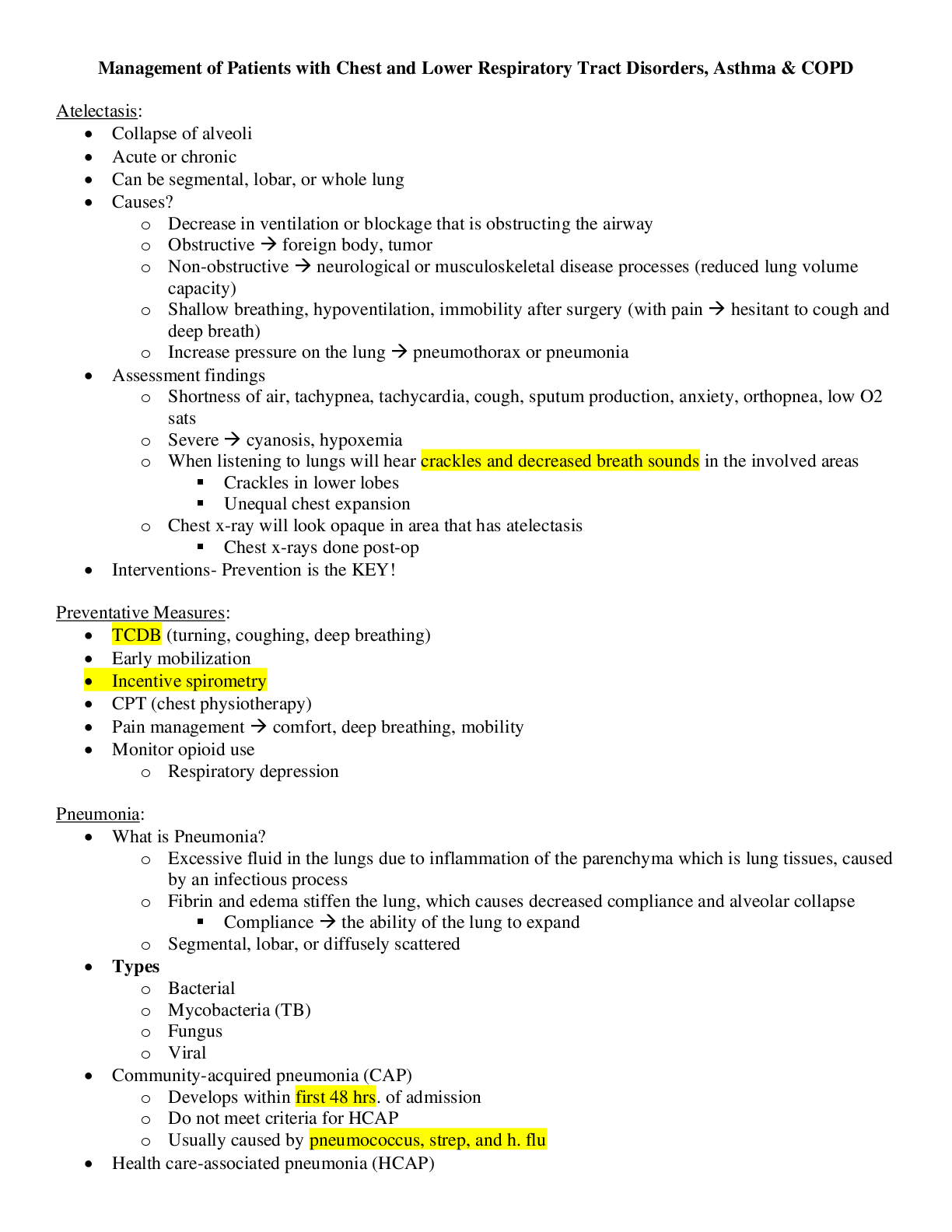
Reviews( 0 )
Document information
Connected school, study & course
About the document
Uploaded On
Jun 25, 2022
Number of pages
11
Written in
Additional information
This document has been written for:
Uploaded
Jun 25, 2022
Downloads
0
Views
37




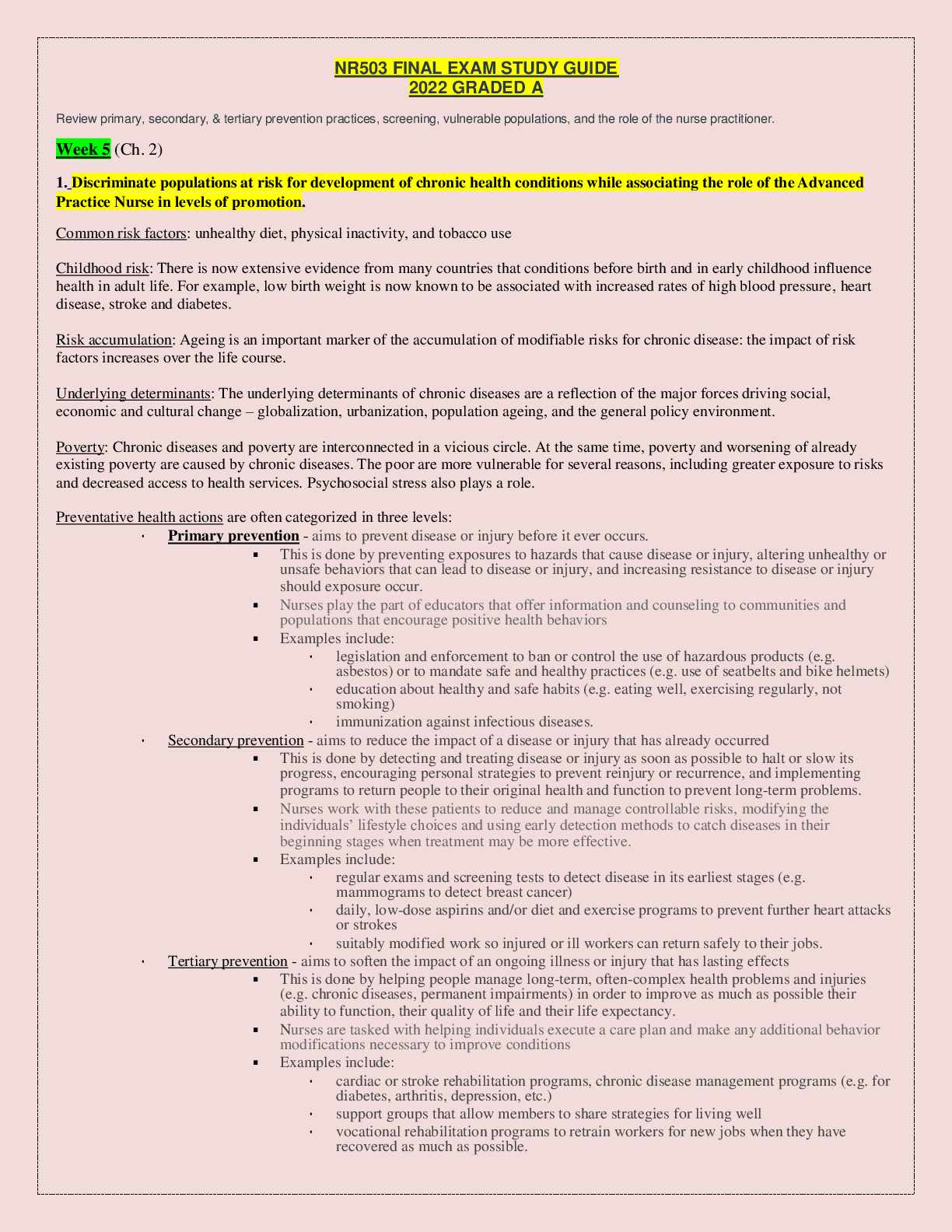
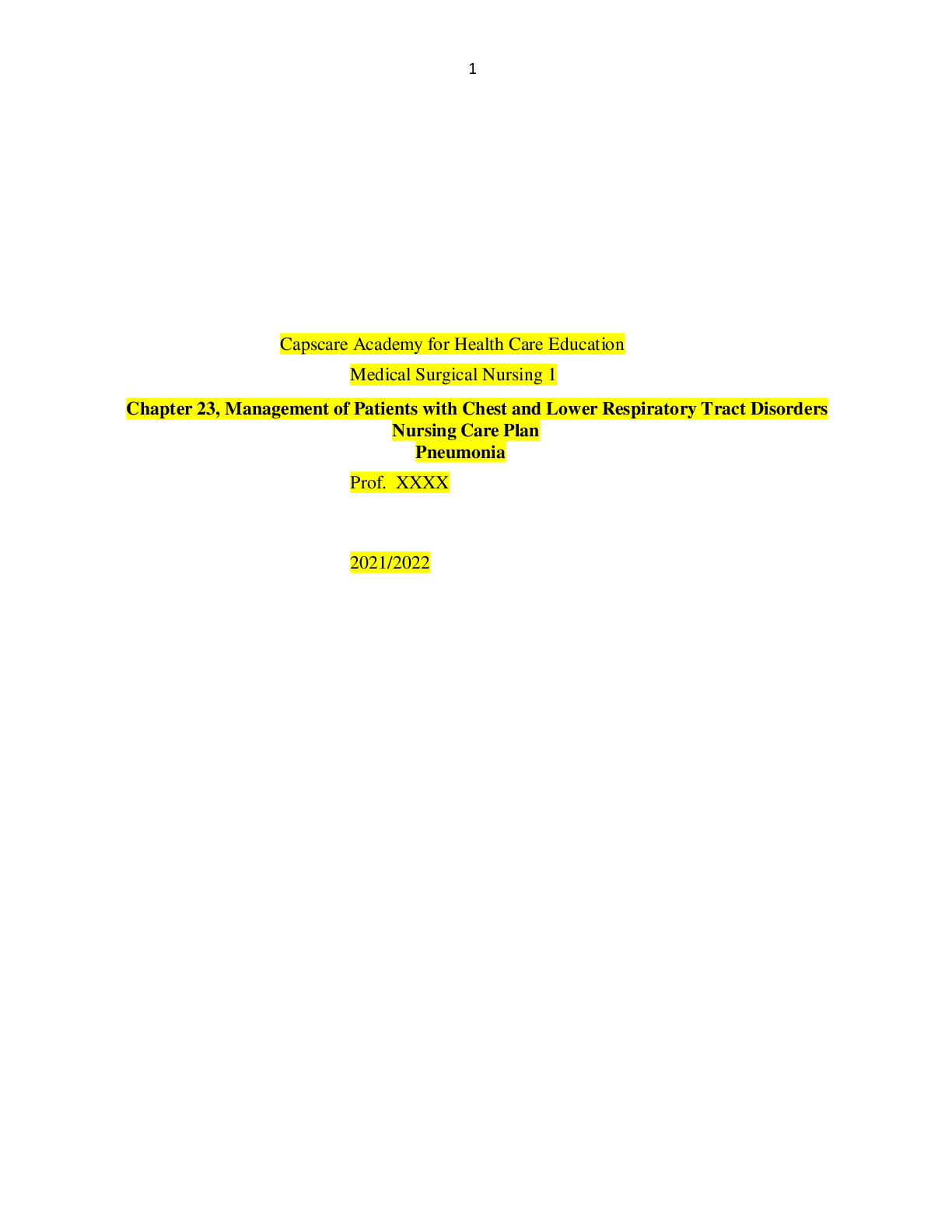






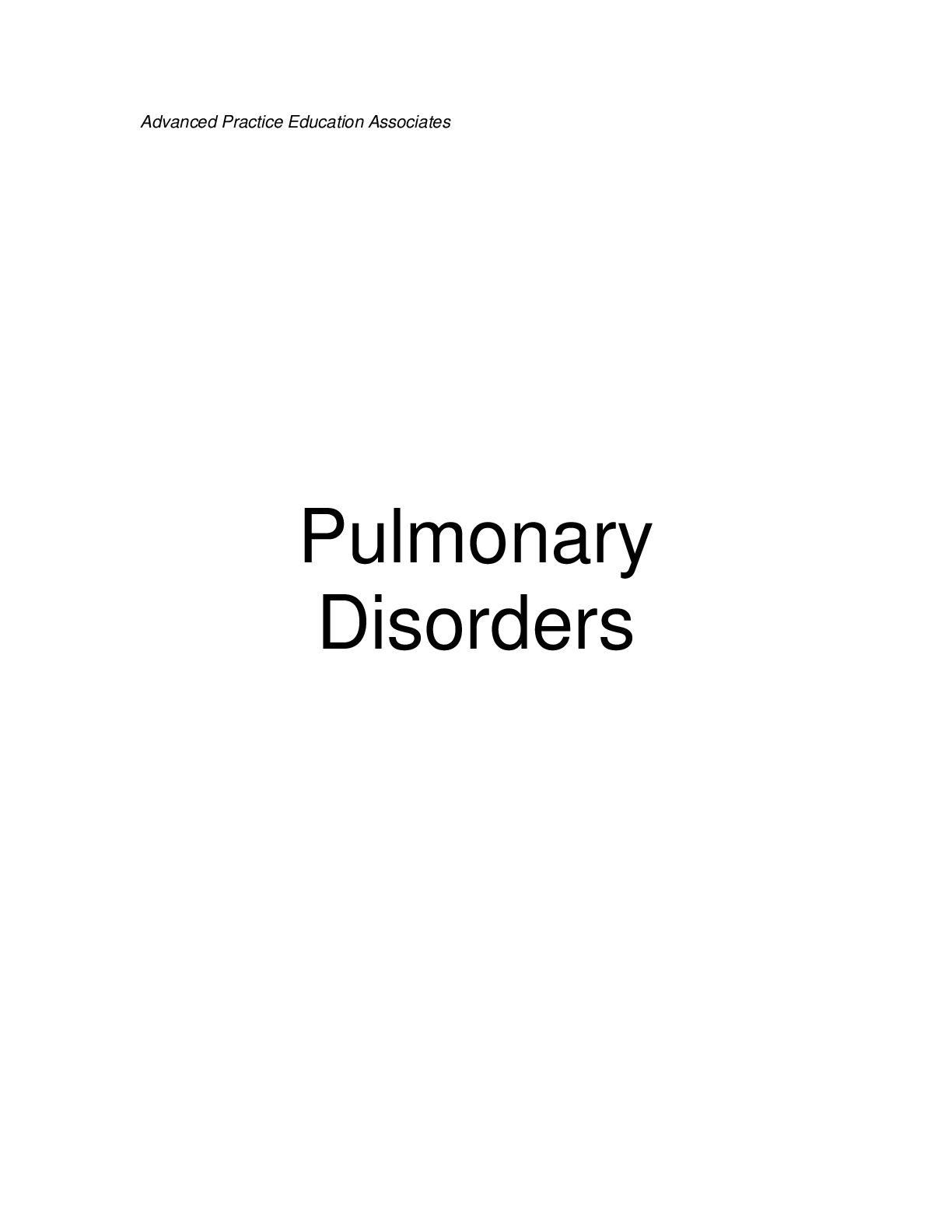
.png)





